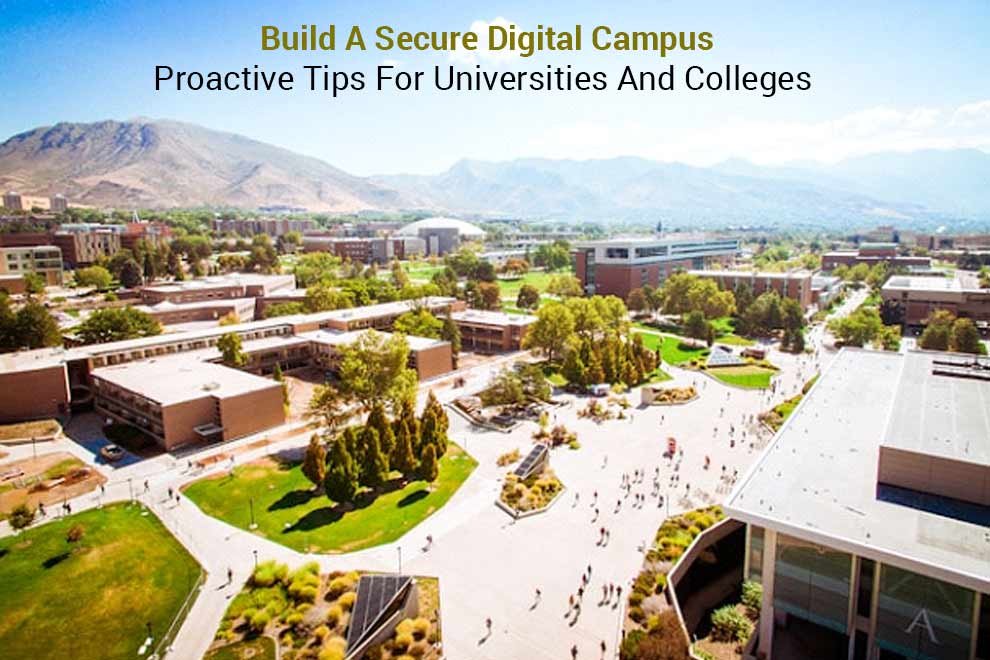Education was fourth among the most targeted sectors for hacking in the first half of 2025. And schools, including higher-ed facilities saw ransomware incidents surge 23% year over year, according to Comparitech’s recent report. Colleges and universities are hubs for valuable information like research content, school funding statements, and personal information, making them ideal targets for hackers. As digital campuses or remote classes become popular, cyber attacks in higher-ed facilities won’t go away. More reliance on tech gadgets, cloud storage, and third-party applications means cyber threats actors will have more opportunities to inject ransomware, DDoS (distributed denial of service), phishing, and other malicious attacks against colleges. A breach in these facilities disrupts learning, causes financial loss, and damages reputation. You’re probably wondering if there’s a way colleges can design secure digital or remote campuses? Yes. Through proactive steps, including providing tips for students for safe browsing, online learning can be safeguarded. In this post we’ll discuss the top 3 practices for universities.
Strengthen Networks and System Security
Digital schools aim to achieve convenience and make learning accessible through open access networks. However, such a network lacks security. With no encryptions or security protocols like those set in private networks cyber criminals can hijack data shared by students through servers with ease. What does this mean? Learners’ IDs, health reports, funding statements, researched materials, log in credentials can get in the hands of hackers who might conduct identity theft, leak critical information, or even log in systems and redirect traffic. Aside from weak networks, universities also rely on conventional (legacy) infrastructure, which hacking groups have mastered ways to crack. To build safe digital campuses, universities should combine network security measures. Deploying firewalls and up-to-date security software (anti-virus and anti-malware) can protect servers and endpoints or devices against malware, SQL injections, and ransomware. When these two measures are paired, they block traffic from suspicious sources.
How about pairing hard-to-crack passwords with multi-factor authentication like one-time passwords and fingerprint scans? This could prevent unwanted access to devices and students’ accounts. And instead of using default passwords for Wi-Fi, universities should consider advanced Wi-Fi encryption like WPA3. VPNs (virtual private networks), MFA, and strong passwords also secure remote access, ensuring safe studying within LMS platforms like Blackboard or Canvas LMS. Another tactic is constant monitoring of networks and blocking potential threats in real-time using intrusion detection and prevention systems and SIEM- security information and event management.
Foster Long-term Cybersecurity Culture
It’s not an IT expert’s job only to safeguard digital learning. Learners, administrators, professors, and other faculty members must know the risks and how to mitigate them. This can be achieved through ongoing awareness training. Colleges can offer regular teachings on detecting phishing attempts, proper password management, secure browsing, and safe data handling. Throughout training, sharing real-world scenarios of previous cyber attacks on educational facilities creates an in-depth understanding of how digital threats work. A good example is the ransomware attack on Lincoln College that led to the closure of the institution. From this example, individuals learn why regular security audits, using MFA (multi-factor authentication), having data backups, and educating staff are crucial for system breach prevention.
Security training also focuses on solutions used to secure devices and networks. A university can train learners about the correct usage of education cybersecurity solutions like managed EDRs. Since endpoint detection response tools monitor networks and devices 24/7, using them correctly ensures real-time threat detection and prevention. Training should not involve theory only. Interactive activities like simulation exercises and quizzes should be prioritized. When trainers simulate a phishing attack, for example, students, teachers, and system admins gain hands-on experience how to spot and respond to social-engineered emails. This step reduces incidents where individuals are tricked into sharing login credentials or clicking on untrustworthy links, which download malware onto systems.
Incident Response Planning
Data shared by Varonis reveals that despite higher-ed institutions being well prepared for cyber incidents, they paid $5.85 million mean ransom, which is the third highest in any sector in 2024. And 59% say they lost a lot of business and revenue following ransomware. What can colleges or universities do to prevent further damage when an incident occurs? Have an incident response plan ready. With an IRP (incident response plan) learning organizations detect potential threats, respond to them, and limit their impact. Effective IRPs for colleges provide swift action to contain a breach, eliminate the risk, minimize the damage, and recover. So, when developing a response plan, clear policies and defined roles of IRP teams must be outlined. Plus, a communication strategy must be in place to keep everyone informed on how to manage a threat.
With the introduction of online campuses, cybersecurity in colleges and universities must be robust to minimize data theft, ransomware, DDoS attacks, and other threats. Building a secure digital campus is a continuous practice. And higher-ed facilities can safeguard online studies by securing their networks and infrastructure, developing incident response plans, and nurturing cybersecurity awareness through regular training programs.











